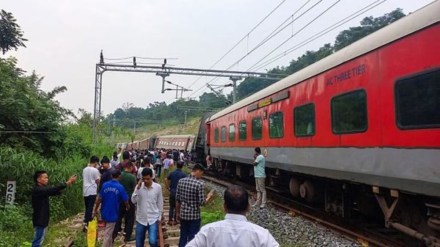According to Railway Minister Ashwini Vaishnaw’s written reply in Lok Sabha, the number of train accidents has decreased dramatically from 135 in 2014-15 to just 40 in 2023-24. Furthermore, the overall train accidents from 2004 to 2014, which averaged to 171 annually, have dropped significantly to 68 per year during the 2014-2024 period. In addition, several safety indices, such as Accidents per Million Train Kilometer, have improved by approximately 73%. Vaishnaw says that this drop reflects the positive impact of technological innovations and infrastructure improvements on railway safety, contributing to a safer travel environment for millions of passengers.
Implementation of Kavach for safety of Indian Railways
The Indian Railways has adopted several state-of-the-art technologies to further enhance safety. One of the key developments is the introduction of the Kavach system, which is already operational on over 1500 Route Kilometers. Work is currently underway on the Delhi-Mumbai and Delhi-Howrah corridors, covering approximately 3,000 Route Kilometers. As of now, track-side activities have been completed on around 1,081 RKm, with 705 RKm finished on the Delhi-Mumbai route and 376 RKm on the Delhi-Howrah route. Additionally, comprehensive safety guidelines concerning signaling, such as mandatory correspondence checks, alteration protocols, and the preparation of completion drawings, have been issued to ensure consistent safety standards.
From Electronic Interlocking System to GPS-based Fog Safety Devices
Furthermore, over 6,600 stations have been equipped with Electrical/Electronic Interlocking Systems to prevent accidents caused by human error, while track circuiting at over 6,600 stations ensures safe track occupancy monitoring. Track circuiting, which ensures safety by electrically verifying track occupancy, has been implemented at 6,619 stations as of October 31 this year, the minister told Lok Sabha.
Other innovations, such as the GPS-based Fog Safety Device (FSD) and Vigilance Control Devices (VCD) for loco pilots, contribute significantly to reducing accidents in challenging conditions. These efforts underscore the Indian Railways’ commitment to safety and operational excellence.
The minister stated that during primary track renewals, modern track structures are being utilized, including 60kg and 90 Ultimate Tensile Strength (UTS) rails, along with Prestressed Concrete Sleepers (PSC) featuring both normal and wide-base designs with elastic fastenings. Additionally, fan-shaped layout turnouts on PSC sleepers and Steel Channel/H-beam Sleepers on girder bridges are being employed to enhance the durability and safety of the railway network.
(With Inputs from PTI)
